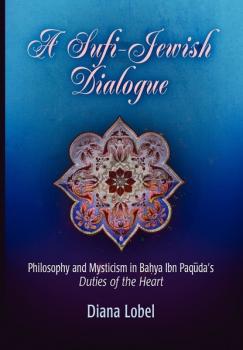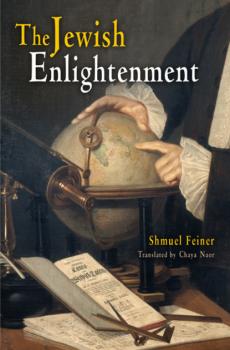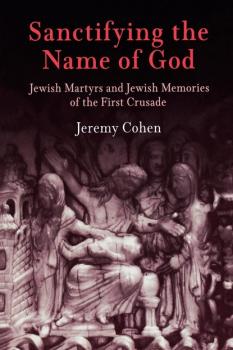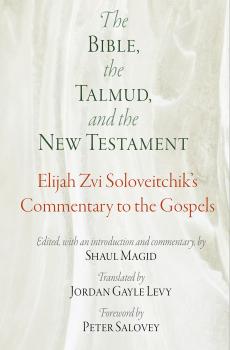Jewish Culture and Contexts
Скачать книги из серии Jewish Culture and ContextsUnveiling Eve
Selected by Choice magazine as an Outstanding Academic Title Unveiling Eve is the first feminist inquiry into the Hebrew poetry and prose forms cultivated in Muslim and Christian Spain, Italy, and Provence in the eleventh through fourteenth centuries. In the Jewish Middle Ages, writing was an exclusively male competence, and textual institutions such as the study of scripture, mysticism, philosophy, and liturgy were men's sanctuaries from which women were banished. These domains of male expertise—alongside belles lettres, on which Rosen's book focuses—served as virtual laboratories for experimenting with concepts of femininity and masculinity, hetero- and homosexuality, feminization and virilization, transvestism and transsexuality. Reviewing texts as varied as love lyric, love stories, marriage debates, rhetorical contests, and liturgical and moralistic pieces, Tova Rosen considers the positions and positioning of female figures and female voices within Jewish male discourse. The idolization and demonization of women present in these texts is read here against the background of scripture and rabbinic literature as well as the traditions of chivalry and misogyny in the hosting Islamic and Christian cultures. Unveiling Eve unravels the literary evidence of a patriarchal tradition in which women are routinely rendered nonentities, often positioned as abstractions without bodies or reified as bodies without subjectivities. Without rigidly following any one school of feminist thinking, Rosen creatively employs a variety of methodologies to describe and assess the texts' presentation of male sexual politics and delineate how women and concepts of gender were manipulated, fictionalized, fantasized, and poeticized. Inaugurating a new era of critical thinking in Hebrew literature, Unveiling Eve penetrates a field of medieval literary scholarship that has, until now, proven impervious to feminist criticism.
A Sufi-Jewish Dialogue
Written in Judeo-Arabic in eleventh-century Muslim Spain but quickly translated into Hebrew, Bahya Ibn Paquda's Duties of the Heart is a profound guidebook of Jewish spirituality that has enjoyed tremendous popularity and influence to the present day. Readers who know the book primarily in its Hebrew version have likely lost sight of the work's original Arabic context and its immersion in Islamic mystical literature. In A Sufi-Jewish Dialogue , Diana Lobel explores the full extent to which Duties of the Heart marks the flowering of the «Jewish-Arab symbiosis,» the interpenetration of Islamic and Jewish civilizations. Lobel reveals Bahya as a maverick who integrates abstract negative theology, devotion to the inner life, and an intimate relationship with a personal God. Bahya emerges from her analysis as a figure so steeped in Islamic traditions that an Arabic reader could easily think he was a Muslim, yet the traditional Jewish seeker has always looked to him as a fountainhead of Jewish devotion. Indeed, Bahya represents a genuine bridge between religious cultures. He brings together, as well, a rationalist, philosophical approach and a strain of Sufi mysticism, paving the way for the integration of philosophy and spirituality in the thought of Moses Maimonides. A Sufi-Jewish Dialogue is the first scholarly book in English about a tremendously influential work of medieval Jewish thought and will be of interest to readers working in comparative literature, philosophy, and religious studies, particularly as reflected in the interplay of the civilizations of the Middle East. Readers will discover an extraordinary time when Jewish, Christian, and Islamic thinkers participated in a common spiritual quest, across traditions and cultural boundaries.
A Kingdom of Priests
According to the account in the Book of Exodus, God addresses the children of Israel as they stand before Mt. Sinai with the words, «You shall be to me a kingdom of priests and a holy nation» (19:6). The sentence, Martha Himmelfarb observes, is paradoxical, for priests are by definition a minority, yet the meaning in context is clear: the entire people is holy. The words also point to some significant tensions in the biblical understanding of the people of Israel. If the entire people is holy, why does it need priests? If membership in both people and priesthood is a matter not of merit but of birth, how can either the people or its priests hope to be holy? How can one reconcile the distance between the honor due the priest and the actual behavior of some who filled the role? What can the people do to make itself truly a kingdom of priests? Himmelfarb argues that these questions become central in Second Temple Judaism. She considers a range of texts from this period, including the Book of Watchers , the Book of Jubilees , legal documents from the Dead Sea Scrolls, the writings of Philo of Alexandria, and the Book of Revelation of the New Testament, and goes on to explore rabbinic Judaism's emphasis on descent as the primary criterion for inclusion among the chosen people of Israel—a position, she contends, that took on new force in reaction to early Christian disparagement of the idea that mere descent from Abraham was sufficient for salvation.
The Jewish Enlightenment
At the beginning of the eighteenth century most European Jews lived in restricted settlements and urban ghettos, isolated from the surrounding dominant Christian cultures not only by law but also by language, custom, and dress. By the end of the century urban, upwardly mobile Jews had shaved their beards and abandoned Yiddish in favor of the languages of the countries in which they lived. They began to participate in secular culture and they embraced rationalism and non-Jewish education as supplements to traditional Talmudic studies. The full participation of Jews in modern Europe and America would be unthinkable without the intellectual and social revolution that was the Haskalah, or Jewish Enlightenment. Unparalleled in scale and comprehensiveness, The Jewish Enlightenment reconstructs the intellectual and social revolution of the Haskalah as it gradually gathered momentum throughout the eighteenth century. Relying on a huge range of previously unexplored sources, Shmuel Feiner fully views the Haskalah as the Jewish version of the European Enlightenment and, as such, a movement that cannot be isolated from broader eighteenth-century European traditions. Critically, he views the Haskalah as a truly European phenomenon and not one simply centered in Germany. He also shows how the republic of letters in European Jewry provided an avenue of secularization for Jewish society and culture, sowing the seeds of Jewish liberalism and modern ideology and sparking the Orthodox counterreaction that culminated in a clash of cultures within the Jewish community. The Haskalah's confrontations with its opponents within Jewry constitute one of the most fascinating chapters in the history of the dramatic and traumatic encounter between the Jews and modernity. The Haskalah is one of the central topics in modern Jewish historiography. With its scope, erudition, and new analysis, The Jewish Enlightenment now provides the most comprehensive treatment of this major cultural movement.
Sanctifying the Name of God
How are martyrs made, and how do the memories of martyrs express, nourish, and mold the ideals of the community? Sanctifying the Name of God wrestles with these questions against the background of the massacres of Jews in the Rhineland during the outbreak of the First Crusade. Marking the first extensive wave of anti-Jewish violence in medieval Christian Europe, these «Persecutions of 1096» exerted a profound influence on the course of European Jewish history. When the crusaders demanded that Jews choose between Christianity and death, many opted for baptism. Many others, however, chose to die as Jews rather than to live as Christians, and of these, many actually inflicted death upon themselves and their loved ones. Stories of their self-sacrifice ushered the Jewish ideal of martyrdom—kiddush ha-Shem, the sanctification of God's holy name—into a new phase, conditioning the collective memory and mindset of Ashkenazic Jewry for centuries to come, during the Holocaust, and even today. The Jewish survivors of 1096 memorialized the victims as martyrs as they rebuilt their communities during the decades following the Crusade. Three twelfth-century Hebrew chronicles of the persecutions preserve their memories of martyrdom and self-sacrifice, tales fraught with symbolic meaning that constitute one of the earliest Jewish attempts at local, contemporary historiography. Reading and analyzing these stories through the prism of Jewish and Christian religious and literary traditions, Jeremy Cohen shows how these persecution chronicles reveal much more about the storytellers, the martyrologists, than about the martyrs themselves. While they extol the glorious heroism of the martyrs, they also air the doubts, guilt, and conflicts of those who, by submitting temporarily to the Christian crusaders, survived.
The Jews of Eastern Europe, 1772-1881
In the nineteenth century, the largest Jewish community the modern world had known lived in hundreds of towns and shtetls in the territory between the Prussian border of Poland and the Ukrainian coast of the Black Sea. The period had started with the partition of Poland and the absorption of its territories into the Russian and Austro-Hungarian empires; it would end with the first large-scale outbreaks of anti-Semitic violence and the imposition in Russia of strong anti-Semitic legislation. In the years between, a traditional society accustomed to an autonomous way of life would be transformed into one much more open to its surrounding cultures, yet much more confident of its own nationalist identity. In The Jews of Eastern Europe , Israel Bartal traces this transformation and finds in it the roots of Jewish modernity.
Missionaries, Converts, and Rabbis
An examination of the life and work of Alexander McCaul and his impact on Jewish-Christian relations In Missionaries, Converts, and Rabbis , David B. Ruderman considers the life and works of prominent evangelical missionary Alexander McCaul (1799-1863), who was sent to Warsaw by the London Society for the Promotion of Christianity Amongst the Jews. He and his family resided there for nearly a decade, which afforded him the opportunity to become a scholar of Hebrew and rabbinic texts. Returning to England, he quickly rose up through the ranks of missionaries to become a leading figure and educator in the organization and eventually a professor of post-biblical studies at Kings College, London. In 1837, McCaul published The Old Paths , a powerful critique of rabbinic Judaism that, once translated into Hebrew and other languages, provoked controversy among Jews and Christians alike. Ruderman first examines McCaul in his complexity as a Hebraist affectionately supportive of Jews while opposing the rabbis. He then focuses his attention on a larger network of his associates, both allies and foes, who interacted with him and his ideas: two converts who came under his influence but eventually broke from him; two evangelical colleagues who challenged his aggressive proselytizing among the Jews; and, lastly, three Jewish thinkers—two well-known scholars from Eastern Europe and a rabbi from Syria—who refuted his charges against the rabbis and constructed their own justifications for Judaism in the mid-nineteenth century. Missionaries, Converts, and Rabbis reconstructs a broad transnational conversation between Christians, Jews, and those in between, opening a new vista for understanding Jewish and Christian thought and the entanglements between the two faith communities that persist in the modern era. Extending the geographical and chronological reach of his previous books, Ruderman continues his exploration of the impact of Jewish-Christian relations on Jewish self-reflection and the phenomenon of mingled identities in early modern and modern Europe.
The Bible, the Talmud, and the New Testament
Born in Slutzk, Russia, in 1805, Elijah Zvi Soloveitchik is a largely forgotten member of the prestigious Soloveitchik rabbinic dynasty. Before Hayyim Soloveitchik developed the standard Brisker method of Talmudic study, or Joseph Dov Soloveitchik helped to found American Modern Orthodox Judaism, Elijah Soloveitchik wrote Qol Qore , a rabbinic commentary on the Gospels of Matthew and Mark. Qol Qore drew on classic rabbinic literature, and particularly on the works of Moses Maimonides, to argue for the compatibility of Christianity with Judaism. To this day, it remains the only rabbinic work to embrace the compatibility of Orthodox Judaism and the Christian Bible. In The Bible, the Talmud, and the New Testament , Shaul Magid presents the first-ever English translation of Qol Qore . In his contextualizing introduction, Magid explains that Qol Qore offers a window onto the turbulent historical context of nineteenth-century European Jewry. With violent anti-Semitic activity on the rise in Europe, Elijah Soloveitchik was unique in believing that the roots of anti-Semitism were theological, based on a misunderstanding of the New Testament by both Jews and Christians. His hope was that the Qol Qore , written in Hebrew and translated into French, German, and Polish, would reach Jewish and Christian audiences, urging each to consider the validity of the other's religious principles. In an era characterized by fractious debates between Jewish communities, Elijah Soloveitchik represents a voice that called for radical unity amongst Jews and Christians alike.
Dominion Built of Praise
A constant feature of Jewish culture in the medieval Mediterranean was the dedication of panegyric texts in Hebrew, Judeo-Arabic, and other languages to men of several ranks: scholars, communal leaders, courtiers, merchants, patrons, and poets. Although the imagery of nature and eroticism in the preludes to these poems is often studied, the substance of what follows is generally neglected, as it is perceived to be repetitive, obsequious, and less aesthetically interesting than other types of poetry from the period. In Dominion Built of Praise , Jonathan Decter demurs. As is the case with visual portraits, panegyrics operate according to a code of cultural norms that tell us at least as much about the society that produced them as the individuals they portray. Looking at the phenomenon of panegyric in Mediterranean Jewish culture from several overlapping perspectives—social, historical, ethical, poetic, political, and theological—he finds that they offer representations of Jewish political leadership as it varied across geographic area and evolved over time. Decter focuses his analysis primarily on Jewish centers in the Islamic Mediterranean between the tenth and thirteenth centuries and also includes a chapter on Jews in the Christian Mediterranean through the fifteenth century. He examines the hundreds of panegyrics that have survived: some copied repeatedly in luxurious anthologies, others discarded haphazardly in the Cairo Geniza. According to Decter, the poems extolled conventional character traits ascribed to leaders not only diachronically within the Jewish political tradition but also synchronically within Islamic and, to a lesser extent, Christian civilization and political culture. Dominion Built of Praise reveals more than a superficial and functional parallel between Muslim and Jewish forms of statecraft and demonstrates how ideas of Islamic political legitimacy profoundly shaped the ways in which Jews conceptualized and portrayed their own leadership.









